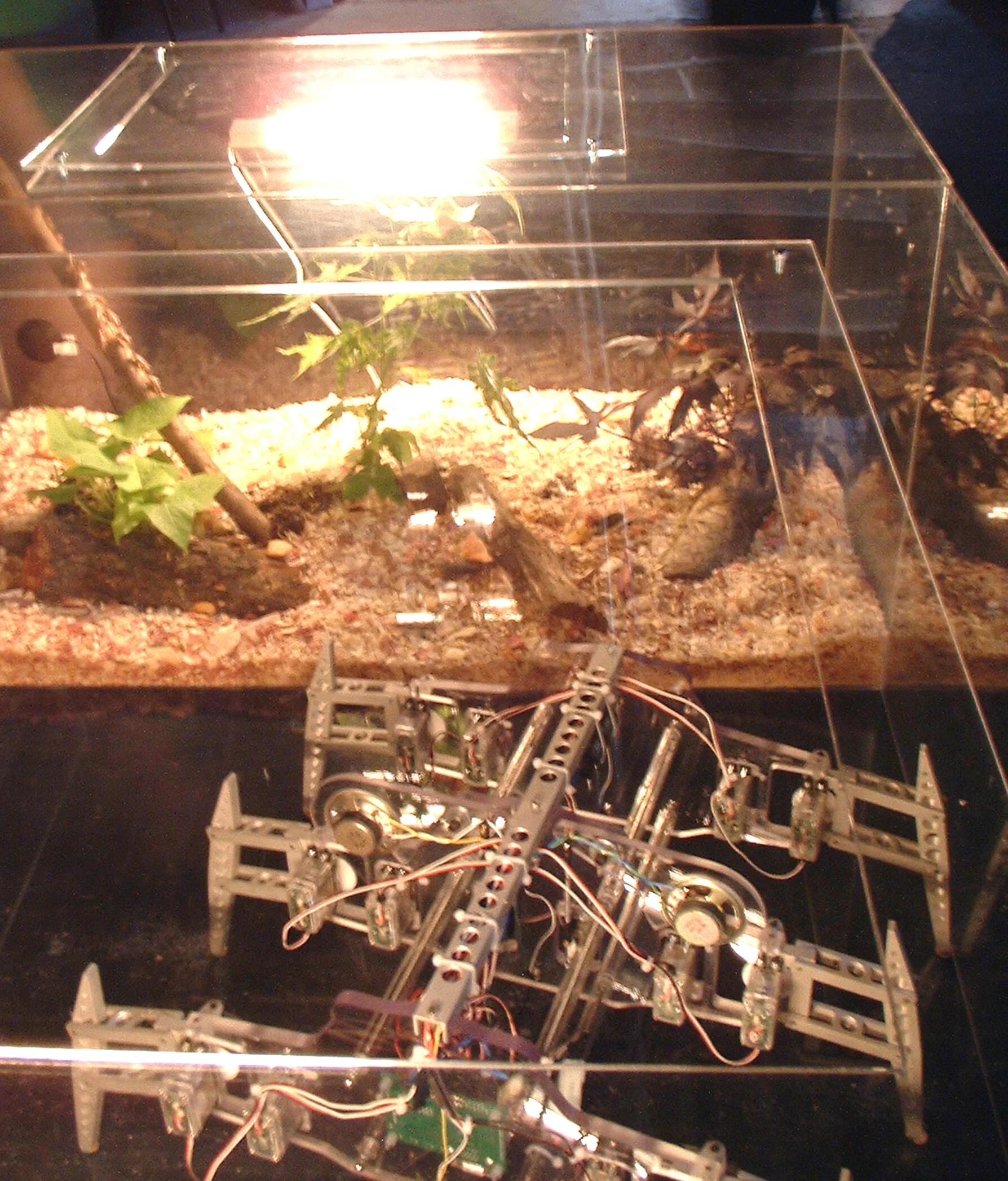small work for robot and insects
Small Work for Robot and Insects is an installation designed to illustrate the intersections and mutual mediation of technological and natural systems. It stages the attempts by a robot to establish some kind of meaningful dialog with a colony of live crickets.
The robot is a custom designed and built polycarbonate and aluminium hexapod with the capacity to express itself using movement, lights and sound. A library of 18 base motions, 7 base light sequences and 32 base sounds can be delivered in any sequence or combination to construct sentences. These base patterns can be further modified by the artificfial intelligence engine. The robot is not attempting to develop an exact simulacra of cricket language but to develop its own interpretational communication system.
Small Work for Robot and Insects uses a custom designed neural network brain, known as Dharmai, to analyse the song of the crickets and formulate responses. Dharmai constantly monitors the behaviour of the crickets to determine the effects of its signals and to look for signs of meaningful responses. In this way the robot constantly develops, expands and refines its vocabulary.
Small Work for Robot and Insects pits the designed intelligence of the machine against the ancient intelligence and will of insects. The crickets ultimately determine what will happen, placing the imperative on the creativity of the robot to engage them and encourage their participation. It has been commonly observed that the crickets will react noisily to large or loud gestures from the robot, and that if the crickets are unresponsive the robot will make increasingly desperate attempts to attract their attention.
During the running of the piece the system samples passages of the songs of the crickets which are processed, buffered and reinserted into the environment generating a dynamic sonic ambience to the ongoing process.




